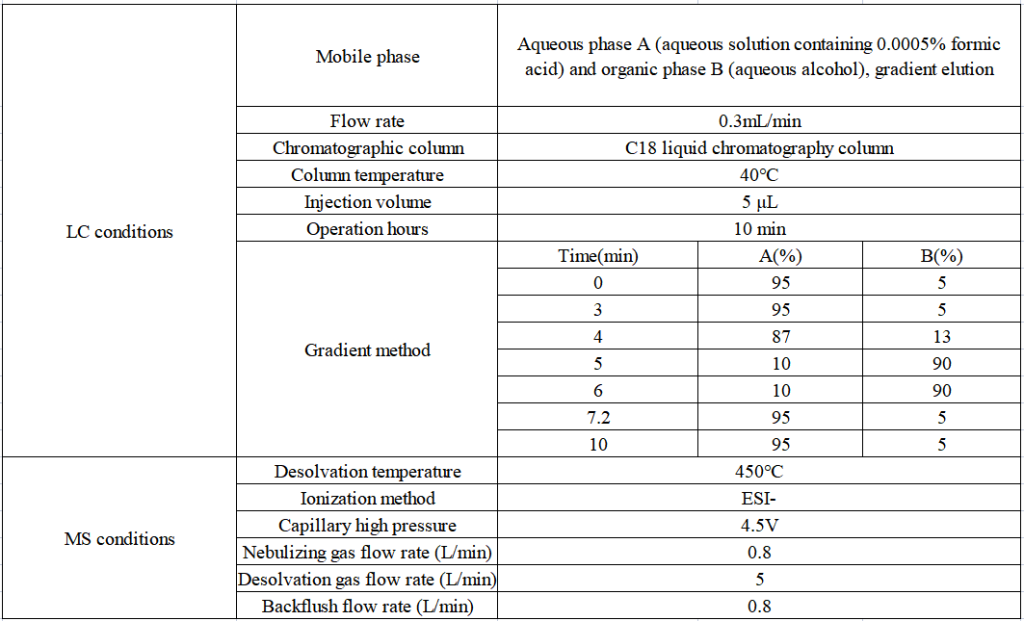Monochloroacetic acid, dichloroacetic acid and glycolic acid are haloacetic acid compounds, which belong to the second largest category of disinfection by-products that are difficult to volatilize and degrade. They are often used to prepare perfume, shower gel, baby care products and other cleaning products. The residual amount of monochloroacetic acid, dichloroacetic acid and glycolic acid is an important factor reflecting the quality of cosmetics. Excessive residual monochloroacetic acid in cosmetics can cause acute toxicity and may cause severe skin burns and eye damage. Therefore, the determination of monochloroacetic acid, dichloroacetic acid and glycolic acid in cosmetics is of great significance.
The EU CLP regulations stipulate that monochloroacetic acid is an acute toxic skin corrosive substance, and the International Agency for Research on Cancer has identified dichloroacetic acid as a carcinogenic 2B substance that may be carcinogenic to humans . There are also relevant standards and quality control methods in China. For example, the industry standard QB/T 4082-2010 stipulates that the residual amount of monochloroacetic acid must be less than 20 mg/kg, and glycolic acid should be less than 0.5%, but there is no limit and method for controlling dichloroacetic acid.
does not require derivatization and other treatments for the pretreatment of cosmetics . The pretreatment is simple, and the method can accurately complete the qualitative and quantitative determination. It is suitable for the determination of monochloroacetic acid, dichloroacetic acid and glycolic acid in cosmetics. detection. This application center has established a rapid and highly sensitive detection method for the determination of monochloroacetic acid, dichloroacetic acid and glycolic acid in cosmetic raw materials using ultra-high performance liquid chromatography-triple quadrupole tandem mass spectrometry .
Experimental part
Instrument
Table 1 Liquid chromatography tandem triple quadrupole mass spectrometer

Table 2 Detection parameters of liquid chromatography tandem triple quadrupole mass spectrometer

Reagents and Standards
Reagents: mass spectrometry grade formic acid (CNW), chromatography grade methanol (Merck);
Pure water: 18.2 MΩ·cm deionized water (25°C);
Standard products: monochloroacetic acid (0.1178g/L), dichloroacetic acid (0.1106g/L) and glycolic acid (0.1g/L) were purchased from Tianjin Alta.
Sample pretreatment
Weigh the cosmetic raw material sample, add ultrapure water to make up to 10mL, vortex until the sample is completely dissolved, take 20µL and dilute it to 1mL with pure water, filter it with a 0.45µm microporous membrane and prepare for testing on the machine, using MRM scanning mode.
Linearity and Sensitivity
In order to test the sensitivity of the low concentration (10.0 ng/mL) standard solution, the signal-to-noise ratios of glycolic acid, monochloroacetic acid and dichloroacetic acid are shown in Table 2, and the signal-to-noise ratios are shown in Figure 4. It can be seen that at the lowest point concentration of the linear range, glycolic acid, monochloroacetic acid and dichloroacetic acid are all greater than 10, and the sensitivity is good, which meets the detection requirements.
Table 2 Linearity, retention time and signal-to-noise ratio of glycolic acid, monochloroacetic acid and dichloroacetic acid




Figure 1 Sensitivity of glycolic acid, monochloroacetic acid and dichloroacetic acid
Repeatability
100 ng/mL in the working curve was selected for precision inspection, seven injections were repeated for repeatability analysis, and the repeatability of retention time and peak area was investigated. The relative standard deviation of the results is shown in the figure below (Figure 2).
Figure 2 100ng/mL repeatability inspection results




Figure 3 TIC charts of glycolic acid, monochloroacetic acid and dichloroacetic acid in 100ng/mL solvent standard
The results showed that the RSDs of the peak areas of glycolic acid, monochloroacetic acid and dichloroacetic acid were between 3.66% and 6.08%, and the precision was good.
Epilogue
In this paper, the indicators of linearity, precision and repeatability of three organic acids of glycolic acid, monochloroacetic acid and dichloroacetic acid in cosmetic raw materials were investigated. The results show that the three organic acid compounds have good linearity, the correlation coefficient r is greater than 0.9978, and the signal-to-noise ratios of 10 ng/mL glycolic acid, monochloroacetic acid and dichloroacetic acid are all greater than 15, 100 ng/mL The RSD values of the peak areas of glycolic acid, monochloroacetic acid and dichloroacetic acid in mL were 3.66%, 4.81% and 6.08%, respectively. Using the LC-MS/MS system with high sensitivity and high anti-pollution ability, sensitive and accurate quantitative detection of glycolic acid, monochloroacetic acid and dichloroacetic acid in cosmetic raw materials can be carried out.
Appendix
Equipment and Consumables Solutions
1. EXPEC 5210 configuration details

2. Standard products


